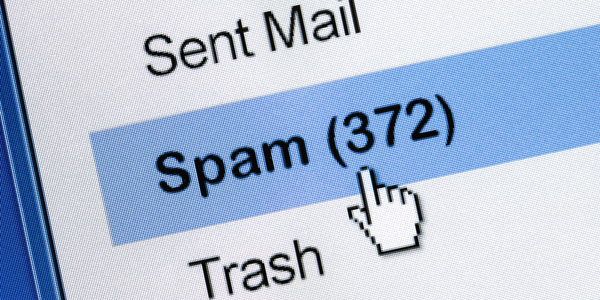
8 Things You Should Do Before you Send an Email Campaign
Article Content
Boost the impact and effectiveness of your email campaigns by following these 8 essential steps before sending, including proofreading, crafting engaging subject lines, ensuring content quality, conducting technical checks, optimizing for multi-device viewing, and conducting final pre-send testing.

Introduction to Preparing for Email Campaigns
Email campaigns serve as a fundamental component of digital marketing efforts, demanding meticulous attention to detail for successful outcomes. A structured and methodical approach to pre-send preparations can elevate the effectiveness and influence of your email campaigns. By meticulously following these crucial steps before launching an email campaign, you can elevate audience engagement and improve conversion rates.
Crafting a compelling subject line is essential to entice recipients to open your email and engage with its content. For instance, incorporating action-oriented language or creating a sense of urgency can significantly impact the open rates of your emails. Moreover, integrating dynamic tags into your subject lines can add a personalized touch, making recipients feel valued and increasing the likelihood of interaction.
Ensuring that your email content is not only visually appealing but also coherent and informative is paramount. Employing a mix of images, text, and proper formatting can enhance the overall readability and engagement levels of your email. Additionally, including clear and concise call-to-action statements within your email can guide recipients on the desired actions, ultimately leading to higher conversion rates.
 Proofreading and Recipient Verification
Proofreading and Recipient Verification
Proofreading emails before sending them is a fundamental step in email campaign preparation. It serves not only to eliminate spelling errors but also to guarantee that the tone and message clarity are suitable for the intended audience. For instance, consider a scenario where a marketing email addressing potential clients contains spelling mistakes. This oversight can significantly impact the credibility of the sender and may lead to a negative perception of the company’s attention to detail.
In addition to proofreading, double-checking recipients is equally critical in the email campaign process. By verifying the accuracy of recipient lists, businesses can prevent embarrassing mishaps such as sending confidential information to the wrong individuals or irrelevant content to the intended audience. For example, imagine a scenario where a promotional offer is mistakenly sent to existing customers who are not eligible for the discount. This mistake not only risks customer dissatisfaction but also reflects poorly on the company’s attention to customer segmentation and targeting strategies.
Implementing a stringent proofreading process can enhance the overall professionalism and credibility of your emails. By taking the time to review and verify the content before hitting the send button, companies demonstrate a commitment to delivering high-quality communication to their recipients. This attention to detail can lead to improved customer relationships, higher engagement rates, and increased trust in the brand’s messaging.
Crafting Engaging Subject Lines and Dynamic Tags
Crafting engaging subject lines is a critical component of a successful email campaign. The subject line acts as the first impression on recipients, influencing whether they decide to open the email or not. For instance, a subject line like “Don’t Miss Out: Exclusive Offer Inside!” creates a sense of urgency and value, prompting recipients to open the email to learn more about the exclusive offer.
Moreover, incorporating dynamic tags in subject lines can further personalize the email content and increase recipient engagement. For example, using the recipient’s first name dynamically in the subject line, such as “John, Your Exclusive Sneak Peek Inside,” can grab the reader’s attention and make them feel valued and important. This personalization can lead to higher open rates and a stronger connection with the audience, ultimately boosting the success of the email campaign.
Ensuring Content Quality and Readability
Crafting high-quality email content involves more than just proper grammar and design; it’s about creating a seamless experience for the recipients. For instance, when composing an email, consider the use of bullet points or numbered lists to break down information into digestible chunks, making it easier for readers to scan and comprehend the content. Additionally, incorporating relevant images or infographics can enhance the visual appeal of the email and help convey complex information in a more engaging manner.
Moreover, the tone and language used in the email play a crucial role in maintaining the reader’s interest. By adopting a conversational yet professional tone throughout the email, you can establish a connection with the recipients and keep them engaged from start to finish. Furthermore, personalizing the content based on the recipient’s preferences or past interactions with your brand can significantly increase the relevance and impact of the email. Overall, focusing on content quality and readability not only improves the effectiveness of your email campaigns but also reflects positively on your brand’s image and credibility.
 Technical Checks, Links Testing, and Compliance
Technical Checks, Links Testing, and Compliance
When conducting technical checks before sending out your email campaign, it is crucial to ensure that all links embedded in the email are functioning correctly. A broken link can not only disrupt the user experience but can also lead to recipients losing trust in the credibility of your content. By meticulously testing each link, you can guarantee a smooth navigation experience for your audience, ultimately increasing the chances of them interacting with your call-to-action or other linked content.
Moreover, compliance with email regulations cannot be overstated. By following legal standards and best practices outlined in regulations like the CAN-SPAM Act, you not only avoid potential legal repercussions but also demonstrate your commitment to ethical and responsible email marketing practices. Additionally, ensuring that your email formatting is optimized for different devices and platforms is paramount. For instance, responsive design principles should be applied to make sure that your email campaigns are accessible and visually appealing across various screen sizes, from desktop computers to mobile devices. By addressing these technical aspects diligently, you can guarantee that your email campaigns are not only compliant but also effectively reach and engage your target audience.
 Optimization for Multi-Device Viewing
Optimization for Multi-Device Viewing
When considering the optimization of email campaigns for multi-device viewing, it is essential to recognize the diverse ways in which recipients access their emails. For instance, more people are now using mobile devices to check their emails, emphasizing the need for responsive design that adjusts seamlessly to different screen sizes and orientations. An example of this would be ensuring that images and text are appropriately sized for mobile screens to prevent users from having to pinch and zoom to read the content, thus providing a more user-friendly experience.
Furthermore, the rising popularity of dark mode across various email platforms necessitates the optimization of email content to cater to this preference. By accommodating dark mode in your email design, you not only enhance the readability of your content but also demonstrate attentiveness to user preferences, which can positively impact the overall user experience. For instance, utilizing contrasting colors and adjusting text styles to ensure readability in dark mode can make your emails more visually appealing and engaging for recipients who opt for this viewing mode. Taking these factors into account can significantly improve the effectiveness of your email campaigns across different devices and user preferences.
Final Checks and Pre-Send Testing
Before sending out your email campaign, it is crucial to review the plain text version of the email. This step ensures that the content maintains clarity and accessibility across a variety of email clients, catering to diverse recipient preferences and technological capabilities. For example, checking the plain text version allows you to identify any formatting issues that might arise when the email is viewed on different devices or email platforms, enhancing the overall user experience.
Furthermore, sending a test email to yourself or a trusted colleague serves as a final quality assurance measure. By doing so, you can meticulously inspect the email for any overlooked errors, such as broken links, formatting inconsistencies, or missing attachments. For instance, sending a test email provides an opportunity to assess the visual presentation of the content, ensuring that it aligns with your branding guidelines and resonates effectively with your target audience.
By conducting comprehensive pre-send testing, you minimize the likelihood of errors and optimize the readiness of your email campaign for deployment. This meticulous approach not only safeguards your brand reputation from potential blunders but also maximizes the impact and success of your email marketing efforts. Investing time in these final checks and tests can significantly enhance the professionalism and effectiveness of your email campaigns, fostering stronger engagement and conversion rates.
This article was originally published on Carbon Digital.